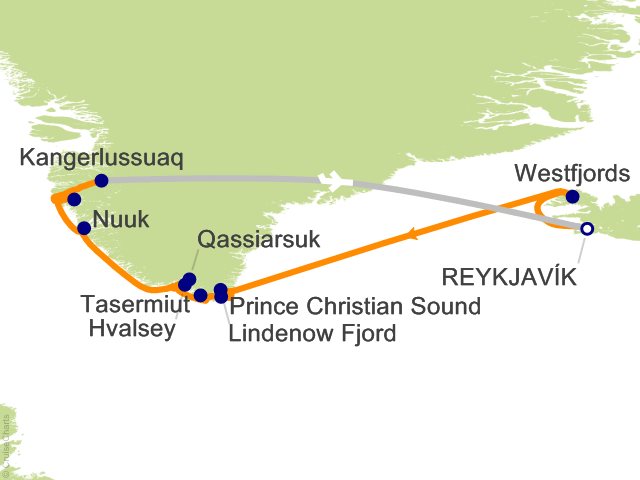Your exploration of Greenland begins with East Greenland, one of the least-visited and most remote parts of the world's largest island. Our journey along the coast will be influenced by weather and ice conditions, with each day-and each off-ship excursion-presenting new adventures. Expect glaciers, steep mountains, and breathtaking fjords. Transiting the 100-kilometer-long Prins Christian Sund (Ikerasassuaq)-one of the world's most scenic fjords-will reveal incredible views. Guests can expect dramatic mountain and seascapes with glaciers tumbling down to the sea, and captivating vistas stretching along the entire fjord. The South Greenlanders who live on this frontier are as unique as the region they inhabit. This is where the migrating hunting people from the east eventually settled around the European trading posts. The handful of villages in this region are renowned for their inhabitants' strong commitment to traditional hunting and fishing practices. We hope to visit Aappilattoq, perched on the shores of Prins Christian Sund (Ikerasassuaq), to meet some of the local partners, listen to their stories, hear their music, taste local food, learn about the fishing and hunting heritage, and perhaps even join a friendly game of soccer-as a player or spectator. If you are looking for the most iconic peaks of South Greenland, you'll be in your glory when we reach Tasermiut Fjord in the heart of what's known as "Arctic Patagonia". On offer are Zodiac excursions and guided on-shore hikes (tailored for different levels of ability and interest) to view the jagged peaks, tumbling glaciers, ice-laden landscapes, alpine vistas, and wildlife. Tasermiut Fjord is ideal for our sea kayaking and paddling programs, as well. We continue on our quest to explore the wild fjords of the uninhabited southeast coast, one of which is Lindenow Fjord, also known by its Greenlandic name, Kangerlussuatsiaq. Thousands of years ago, groups of Paleo-Inuit hunters and fish harvesters settled in these isolated fjords, living off the land, and surviving on food from the sea. This preceded the arrival of European explorers and the establishment of settlements which prompted one of the biggest waves of migration in Greenland. Marine mammals frequent the many fjords in this region. Humpback whales are often observed in the shallow waters at the entrance to the fjords where nutrients are drawn up to the surface. Rare sightings of polar bears are possible as they drift down from the north on sea ice floes propelled by the East Greenland Current. We'll keep our eyes peeled for other wildlife as we continue to explore the remote icescapes of the wild southeast, which is also ideal for hiking, paddle excursions, Zodiac cruises, and shore landings. The southern coast of Greenland is steeped in Norse history. We anticipate a visit to Hvalsey (Qaqortukulooq), the site of Greenland's largest and best-preserved Norse ruins. Exploring the remains of the church (circa 14th century) will make you feel like you're stepping back in time, as the building appears much as it did when it was abandoned in the 15th century. The surrounding fells and fjords remain similarly untouched. Also on our planned itinerary is charming Qassiarsuk, one of the five sites that make up the Kujataa World Heritage Site. It's a small sheep farming settlement where you can experience true South Greenland hospitality and gain insight into the fascinating lives of sheep farmers living at the edge of the massive Greenland Ice Sheet. Take time to explore the remains and replicas of Brattahlid, Erik the Red's estate, once the epicenter of the Greenland Norse Eastern Settlement. During or time in Qassiarsuk, guests will have opportunities to sample local food, enjoy a hike, and, if time and weather allow, we may take a Zodiac cruise amidst towering icebergs. ...
Read More




 Track this Cruise.
Track this Cruise.  Favorite this Cruise and receive Price Alerts when the rates go up or down.
Favorite this Cruise and receive Price Alerts when the rates go up or down.













